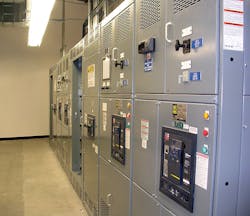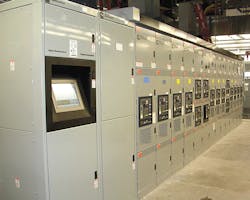Electrical commissioning of complex electrical distribution systems adds value and peace of mind to facility owners. By thoroughly commissioning the electrical system, the facility owner is assured that the complete system will operate as intended when reliability and continuity of power is needed most. In addition to knowing the system will support the critical loads during an emergency event, such as a power outage, the facility owner can count on the overall system performing when one generator fails or is down for maintenance. Finally, he or she knows how long the uninterruptible power supply (UPS) can provide power — and that it will not drop the critical loads when placed in maintenance bypass mode.
The typical commissioning agent has a mechanical background, and much of the commissioning effort is focused on building controls and HVAC systems. While mechanical systems commissioning is important, many owners overlook the value of quality electrical system commissioning. Perhaps this is because the value of commissioning basic electrical systems is limited where most of the focus is on reviewing third-party test reports or contractor installation checklists. For these basic systems, facilities owners may feel that electrical system commissioning is optional. Complex electrical systems, however, require a different approach.
On complex electrical distribution systems — defined for the purpose of this article as systems that include multiple generators, paralleling switchgear, medium-voltage equipment, numerous automatic transfer switches (ATSs), and UPSs — electrical commissioning adds a tremendous amount of value. Without it, the functionality of these systems is left to the field startup services performed by the factory-trained technician. These technicians, while very knowledgeable about their products, do not have the overall understanding of the designer’s and owner’s project requirements. A good electrical commissioning agent provides the needed coordination to fill the gap between the engineer of record’s design intent, the owner’s expectations as identified in the project requirements, and installation and programming of the equipment in the field.
An example of where an electrical commissioning agent can bridge this gap is helping the facility owner determine the most appropriate user-programmable set points for ATSs and paralleling gear so the system works as intended. For ATSs, these are transfer and retransfer time delays. For paralleling gear, it’s load priority sequence values, expected kW values, and various time delays. Prior to formal electrical commissioning, many of the programmable set-points for load add/load shed and ATS transfer time delays were left set at the factory default — or wherever the factory technicians left them after system startup. Usually, these settings were adequate for an average facility but not ideal for any specific facility.
Another example where a good electrical commissioning agent can add significant value is assisting in the development of the load priority matrix for the paralleling gear. Load priority is an often misunderstood and overlooked part of complex emergency electrical systems. An experienced electrical commissioning agent can work with the engineer of record, facility owner, and AHJ to help develop the load priority matrix, and then demonstrate the functionality of the system to the owner and AHJ.
In addition to generators, paralleling gear, and ATSs, UPSs can benefit from electrical commissioning. A functional test script will likely require a load bank test of the UPS system. Using the load bank, the UPS can undergo a full load battery rundown test that records the actual time until the batteries are depleted. The UPS can also be placed into maintenance bypass under full load and the output signal recorded to prove any disruption to critical power is within the limits of the ITIC power acceptability curve. The facility owner will be assured the UPS will function when needed so critical loads are not disrupted during an outage or maintenance.
Electrical commissioning will also test the equipment in various abnormal failure scenarios in addition to normal failure scenarios. A normal failure scenario would be a facility’s electric utility power failing, leading to verification that the generators start, ATSs transfer, and UPSs ride out the momentary power interruption until the generators take over. An abnormal failure scenario would be the same situation, but where one generator fails to start or a tie breaker in a main-tie-main arrangement fails to close. These types of scenarios will only be tested if electrical commissioning is part of the process.
Many owners rely upon the AHJ and NFPA 110, “Standard for Emergency and Standby Power Systems,” acceptance testing guidelines to demonstrate the functionality of the system. What many fail to recognize is this only demonstrates the functionality of the system in a normal failure scenario; it does not include the in-depth testing electrical commissioning can provide. For complex emergency systems with multiple generators, the generator demand and load add/load shed function should be tested, but this is not a requirement of NFPA 110. Electrical commissioning agents will develop test scripts with input from the owner so all features of a system will be tested and demonstrated.
A good commissioning agent also provides additional reassurance to the inspecting AHJ that the system works as designed by the electrical engineer of record. Retro-commissioning of existing electrical systems can provide the same benefit, ensuring the system is optimized and incorporates any change made over the years.
Sweet is a senior associate and an electrical engineer/electrical commissioning agent with Mazzetti, San Francisco. He can be reached at [email protected].



